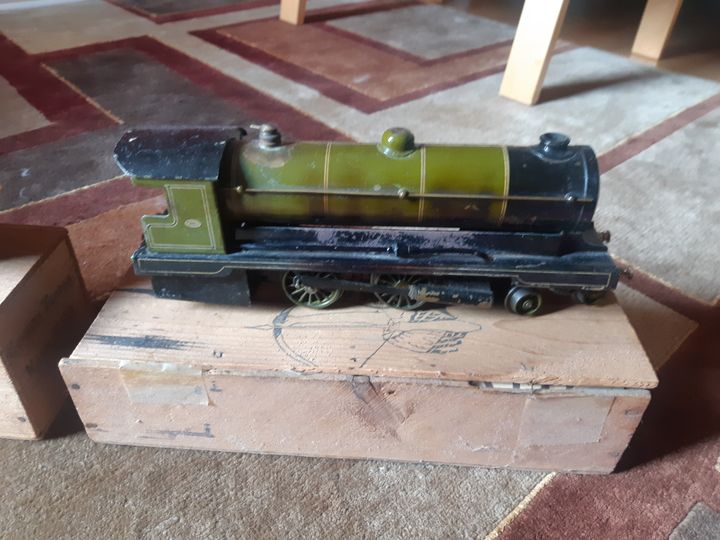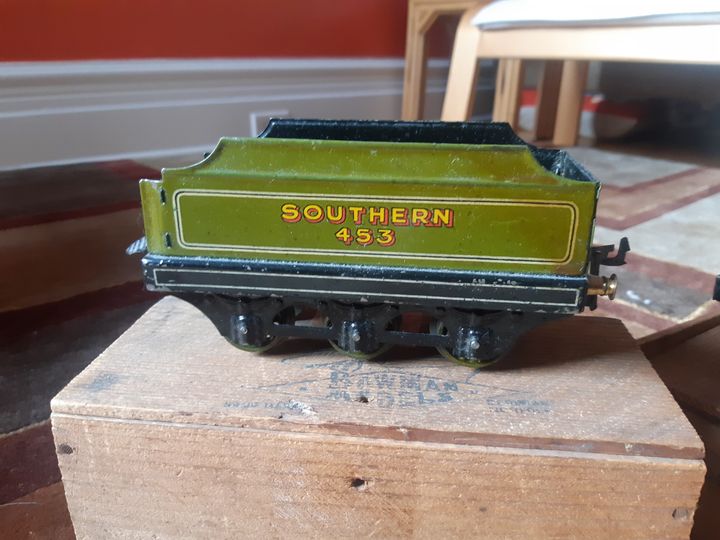Discussion
I've recent come into the possession of a Bowman 234 locomotive and tender. It seems in rather good condition, but hasn't been run in decades. I'd like to sympathetically restore it and if safe to do so get it running again. Does anyone have any knowledge of these? Reading online it needs special track (which I dont have any of). I've never taken a project like this on before so any tips or thoughts are welcome.


Edited by happygoron on Friday 1st November 03:12
I guess not, but if anyone reads this in the future I found the photos on this site useful:
https://www.alspcs.co.uk/234.html
And they mentioned this site which carrys some parts:
https://toytrainspares.net/TOY_TRAINS_BOWMAN_.html
I'll update if/when I get started.
https://www.alspcs.co.uk/234.html
And they mentioned this site which carrys some parts:
https://toytrainspares.net/TOY_TRAINS_BOWMAN_.html
I'll update if/when I get started.
I could probably write a book on these but to save me doing that what do you need to know?
They are great fun, powerful, but fairly uncontrollable, and you will need a long O gauge track with large radius curves.
They are well built and will go on for ever but a bit of testing is perhaps advisable.
If you can get another safety valve, take the guts out and solder a piece of copper or brass tube in, you can connect to a domestic tap to hydraulically test the boiler. Working steam pressure is about 15 psi and mains water is often as much as 60 psi, so if the boiler stands that without leaking it will be fine.
Then with the boiler empty you can connect to a small compressor - a tyre pump will do - and see if the wheels go round, oil the pistons etc., first.
The original Bowman instructions are probably available on the web somewhere. Industrial meths is a better fuel than DIY shop meths if you can get hold of it.
HTH..
They are great fun, powerful, but fairly uncontrollable, and you will need a long O gauge track with large radius curves.
They are well built and will go on for ever but a bit of testing is perhaps advisable.
If you can get another safety valve, take the guts out and solder a piece of copper or brass tube in, you can connect to a domestic tap to hydraulically test the boiler. Working steam pressure is about 15 psi and mains water is often as much as 60 psi, so if the boiler stands that without leaking it will be fine.
Then with the boiler empty you can connect to a small compressor - a tyre pump will do - and see if the wheels go round, oil the pistons etc., first.
The original Bowman instructions are probably available on the web somewhere. Industrial meths is a better fuel than DIY shop meths if you can get hold of it.
HTH..
Ace, thanks, that's perfect to be getting started with. I suspect I'd like to get some track to display it, and get it running on a stand but I'm unlikely to run properly, mainly for reasons of space and track. I'd just like to know it could run if wanted!
My plan is to restore it to good working order if possible, without touching up the patina from its previous life.
I've not managed to find the manual yet but will keep digging.
Do I understand right that the wicks are asbestos? If so is there a modern replacement?
Regarding the previous question about cylinders, no idea and I dont have the train to hand at the moment to check.
My plan is to restore it to good working order if possible, without touching up the patina from its previous life.
I've not managed to find the manual yet but will keep digging.
Do I understand right that the wicks are asbestos? If so is there a modern replacement?
Regarding the previous question about cylinders, no idea and I dont have the train to hand at the moment to check.
Yep traditionally the wicks are asbestos, though not always - sometimes just woven cotton. There are modern ceramic fibre or glass fibre replacements, or you can get away with a bit of loft insulation twisted into a rope.
They are indeed oscillating cylinders and as such like to run fast, forwards only, and will need a push to start if stopped on dead centres.
One good thing about the Bowman locos is that they are very simply built and bolted together, so can be completely dismantled if necessary, unlike the more sophisticated Bassett-Lowke models which are all soldered up permanently.
They are indeed oscillating cylinders and as such like to run fast, forwards only, and will need a push to start if stopped on dead centres.
One good thing about the Bowman locos is that they are very simply built and bolted together, so can be completely dismantled if necessary, unlike the more sophisticated Bassett-Lowke models which are all soldered up permanently.
Edited by Hawkshaw on Tuesday 5th November 18:22
Gassing Station | Scale Models | Top of Page | What's New | My Stuff



